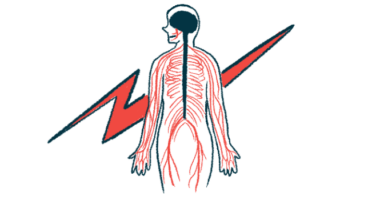New Gene Mutation Linked to CMT4J in Woman, 62: Case Report

A 62-year-old woman was diagnosed with Charcot-Marie-Tooth (CMT) disease type 4J due to two alterations in the FIG4 gene — one of them a newly identified mutation — according to a case study.
“The second mutation, c.2247dupC, p.Ser750GlnX10 is maternally inherited and not previously reported,” the researchers wrote, noting that the first mutation, reported in families of European descent, was inherited from the woman’s father.
The case report, “Clinical and Genetic Analysis of a Patient with CMT4J,” was published in the journal Neurology International.
Charcot-Marie-Tooth type 4 (CMT4) is characterized by damages in the myelin sheath leading to patients’ progressive inability to walk. Myelin is the protective coat of the long projections of neurons called axons.
Caused by mutations in the FIG4 gene, CMT4J is a specific and rare subtype of CMT.
In this report, researchers at Saint Francis Medical Center’s Neuroscience Institute, in New Jersey, and at Dynamic Biologics described the case of a woman with CMT4J.
She was treated by physicians after she started to show signs of gait imbalance. A decade earlier, at age 52, she developed a weak right ankle. Her gait began to slowly worsen since then and she was referred to an orthopedic surgeon.
The surgeon considered a diagnosis of CMT and referred the woman for neurological examination.
The patient had an uneventful clinical history. Physical examination revealed normal vital signs and evidence of pes cavus, or high foot arch, a symptom of CMT. Neurological examination revealed no abnormal signs and normal brain function.
Sensory examination of the hands also was normal. In contrast, the patient showed a mild drop in the vibratory sense in the feet, although she retained both awareness of the position and movement of the body, called proprioception, and pinprick sensibility.
Stretch reflexes — muscle contraction in response to stretching — were reduced in the muscles of the arms and the kneecap, and absent in the ankles. She also had reduced grip strength on both hands.
The woman tested positive on the Romberg test, which means she was unable to maintain balance with her eyes closed. She also was unable to stand on her toes or heels or perform a tandem walk.
In tandem walking, which is widely used to screen neurologic disorders, the toes of the first foot touch the heel of the next one at each step.
Medical history of her close family — specifically, her father, mother, sister, and daughter — revealed no signs of nerve damage.
The patient underwent an electromyogram, a test used to record muscle response to nerve stimulation, which showed she had sensorimotor neuropathy, a condition in which the nerves that control sensation and movement become damaged. Sensorimotor neuropathy is a hallmark of CMT. Damages to sensory nerves in the arms were more pronounced than to motor nerves.
Genetic analysis then was done, using next-generation sequencing for more than 80 genes known to cause nerve damage. These tests showed the patient had two mutations in the FIG4 gene.
One of the mutations, c.122T > C, p.Ile41Thr, which was inherited from her father, had been previously reported as a disease-causing mutation. However, the second one, inherited from her mother, was new. Subsequent analysis predicted that it leads to a shorter than normal protein produced from the FIG4 gene.
Of note, one of the patient’s sisters, who unlike the other relatives had neurological abnormalities, did not carry either of these two mutations.
This case report “expands the clinical and genetic spectrum of patients with CMT 4J,” the researchers concluded, adding that it “demonstrates the power of next generation sequencing to identify the genetic basis of patients with CMT even when the frequency is rare.”







